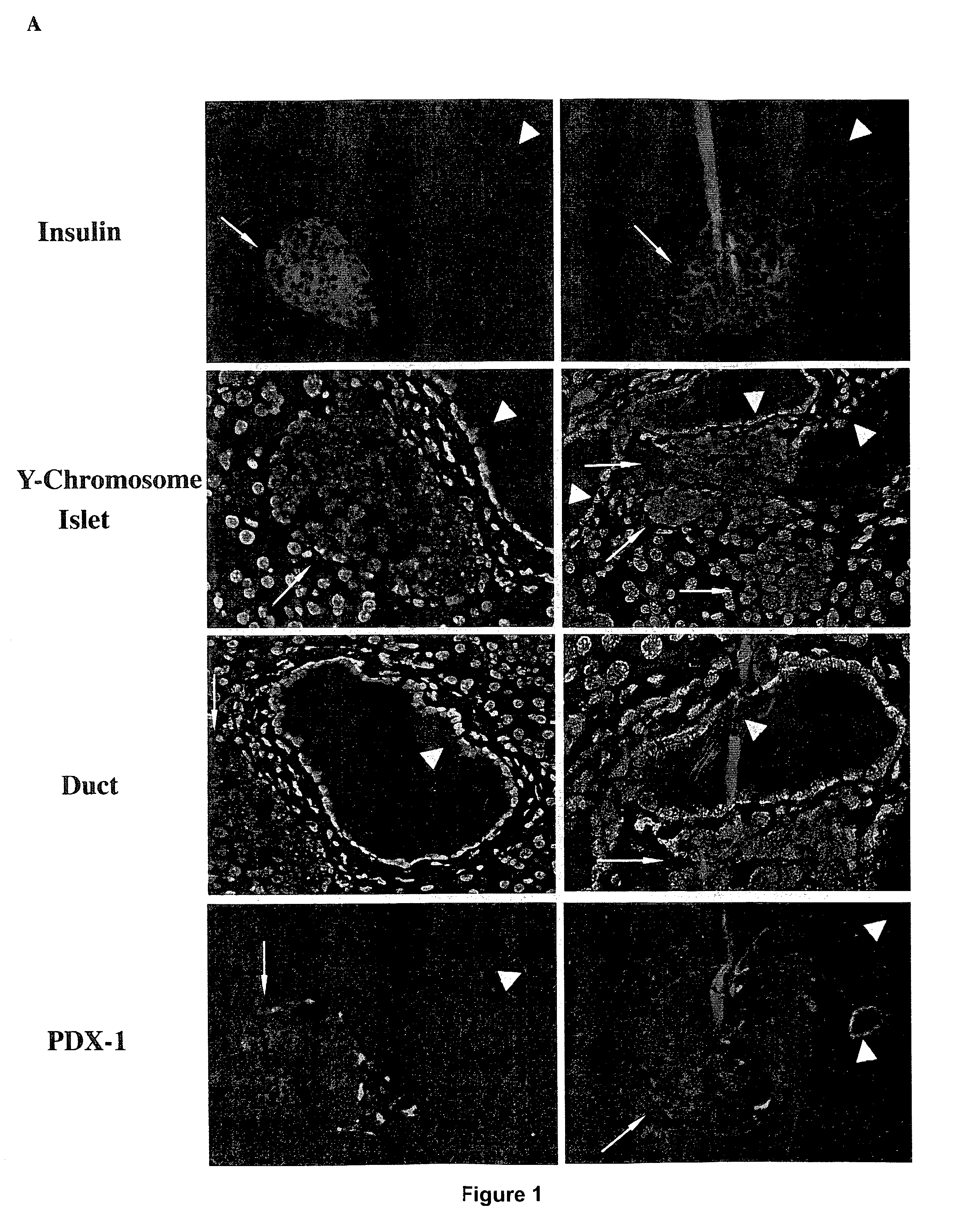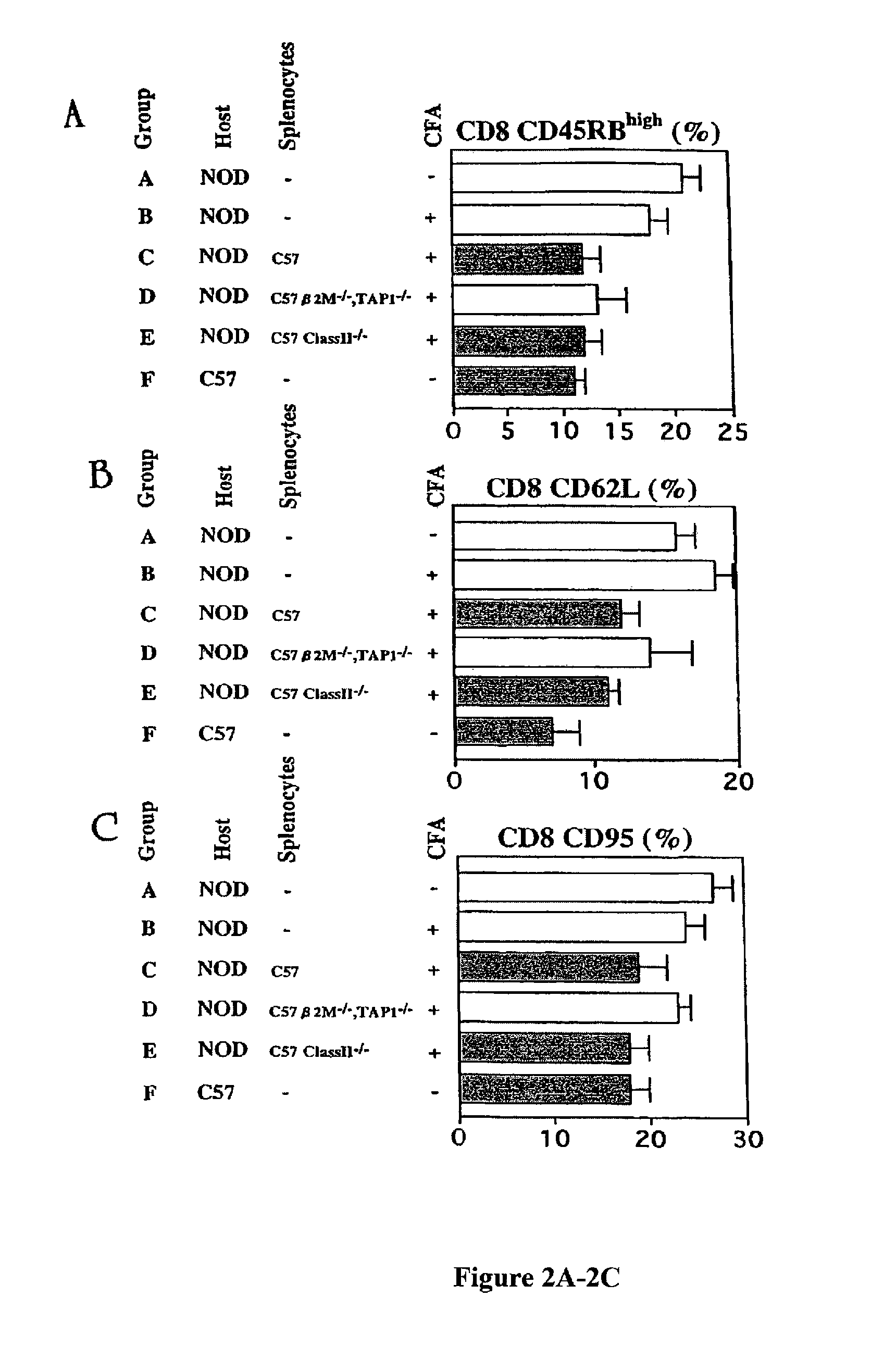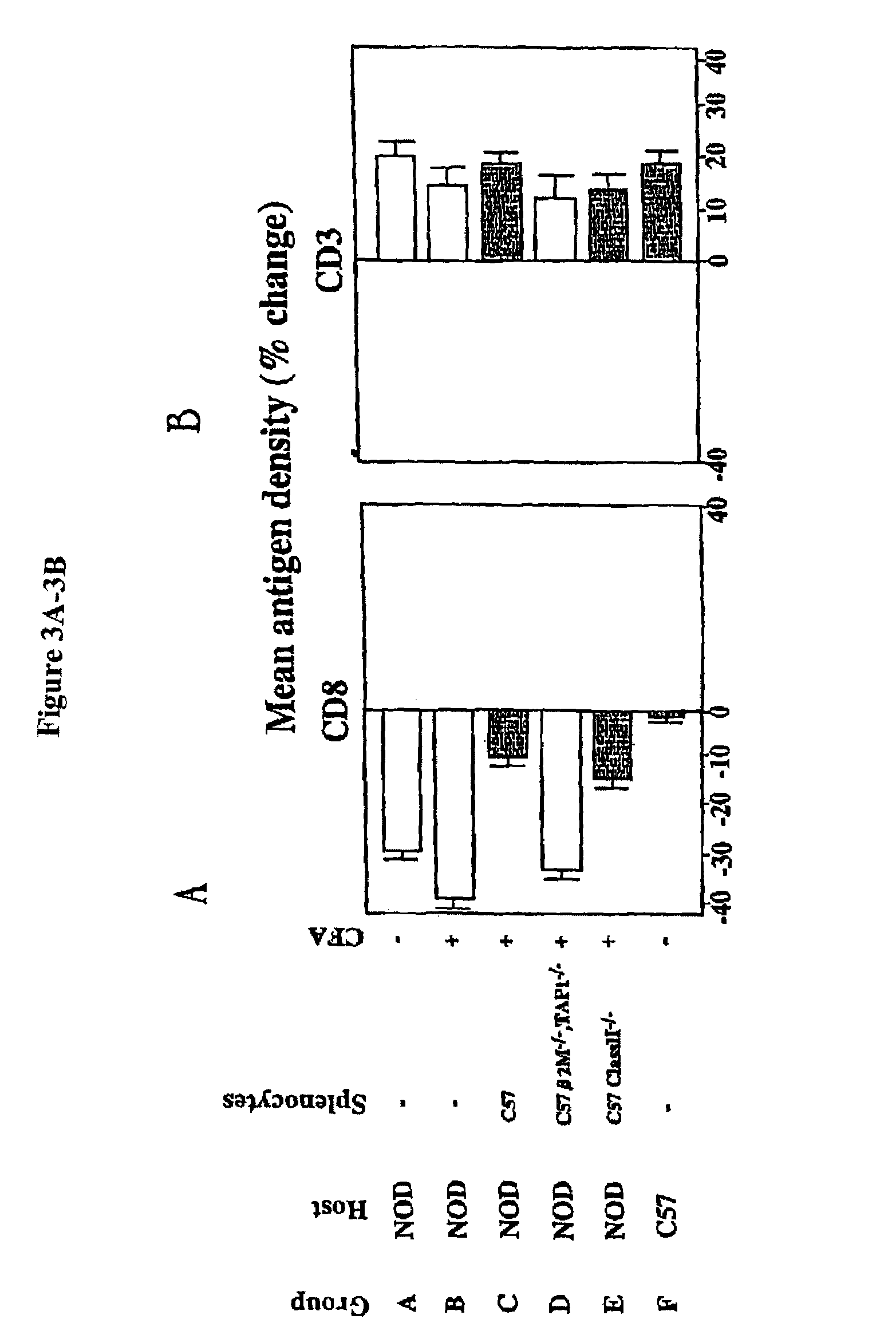Methods and compositions for treating type 1 diabetes
a type 1 diabetes and composition technology, applied in the field of repairing and regenerating damaged tissue, can solve the problems of inability to prevent end-stage diseases or permanently reverse insulitis, inability to clinically apply primarily, and inability to achieve the effect of permanently reversing insulitis, enhancing post-receptor tnf-alpha action, and enhancing tnf-alpha bioavailability or stability
- Summary
- Abstract
- Description
- Claims
- Application Information
AI Technical Summary
Benefits of technology
Problems solved by technology
Method used
Image
Examples
example 1
CFA Treatment and Islet Transplantation in NOD Mice
[0087]Hosts for the transplantation experiments were severely diabetic female NOD mice, usually greater than 20 weeks of age, which exhibited blood glucose concentrations of greater than 400 mg / dl for at least seven days and had been treated by daily administration of insulin for that length of time. Islet transplants were placed unilaterally in the kidney capsule to facilitate non-lethal removal and histological examination. Islets from 6-8 week-old pre-diabetic donor females or from normal C57 donor mice were rapidly rejected by diabetic NOD hosts in all cases, usually by day 9. Although C57 donor islets with transient ablation of class I survive indefinitely in non-immunosuppressed diabetic and non-autoimmune diabetic hosts, the survival time for β2M− / − C57 islets in diabetic NOD females is only about two to three times that of normal C57 islets. This observation confirms that the ablation of the donor cells is related to the cur...
example 2
Optimizing a Curative Therapy in the Diabetic NOD Mouse
[0100]In order to examine the differential effects of CFA, BCG, TNF-α, and splenocyte administration, late stage NOD mice (>15 weeks of age) were randomly assigned to one of four treatment groups, i.e., one injection of CFA, one injection of BCG (4 mg / kg), one injection of 10 ug TNF-α, or one injection of F1 splenocytes (1×106 cells, IV) obtained from normal donors. The treated NOD mice were serially sacrificed on day 2, day 7, and day 14 (Table 2). An examination of pancreatic histology evaluated the effects of the interventions on invasive insulitis (Table 3).
[0101]Table 2 shows that on day 2 both a single injection of CFA and a single injection of low dose TNF-α (10 μg) had eliminated completely all subpopulations of cells with in vitro TNF-α sensitivity. At day 7 and day 14, this population of TNF-α sensitive cells was again evident. Simultaneous pancreatic histology of these cohorts confirmed a dramatic reduction in insulit...
example 3
Functional Impact of Donor Cell Radiation on Restoration of Normoglycemia in Severely Diabetic NOD Mice
[0108]Severely hyperglycemic NOD mice were originally treated with CFA to induce TNF-alpha and simultaneously exposed to functional complexes of MHC class I molecules and allogeneic peptides presented on either viable splenocytes or on islets. Normoglycemia for a 40-day treatment period, a critical parameter of this approach, was induced either by the implantation of temporary alginate encapsulated islets or subrenally placed syngeneic islet transplants. Both methods of glucose control can be surgically removed to test for restored endogenous pancreatic function. All original experiments were designed to treat established NOD female mice with severe hyperglycemia and utilized a 40-day time period of tight, artificial glucose control. Utilization of this temporary glucose control permitted sufficient endogenous pancreatic re-growth of the endogenous pancreas to sustain normoglycemia...
PUM
| Property | Measurement | Unit |
|---|---|---|
| concentrations | aaaaa | aaaaa |
| body weight | aaaaa | aaaaa |
| volume | aaaaa | aaaaa |
Abstract
Description
Claims
Application Information
 Login to View More
Login to View More - R&D
- Intellectual Property
- Life Sciences
- Materials
- Tech Scout
- Unparalleled Data Quality
- Higher Quality Content
- 60% Fewer Hallucinations
Browse by: Latest US Patents, China's latest patents, Technical Efficacy Thesaurus, Application Domain, Technology Topic, Popular Technical Reports.
© 2025 PatSnap. All rights reserved.Legal|Privacy policy|Modern Slavery Act Transparency Statement|Sitemap|About US| Contact US: help@patsnap.com



